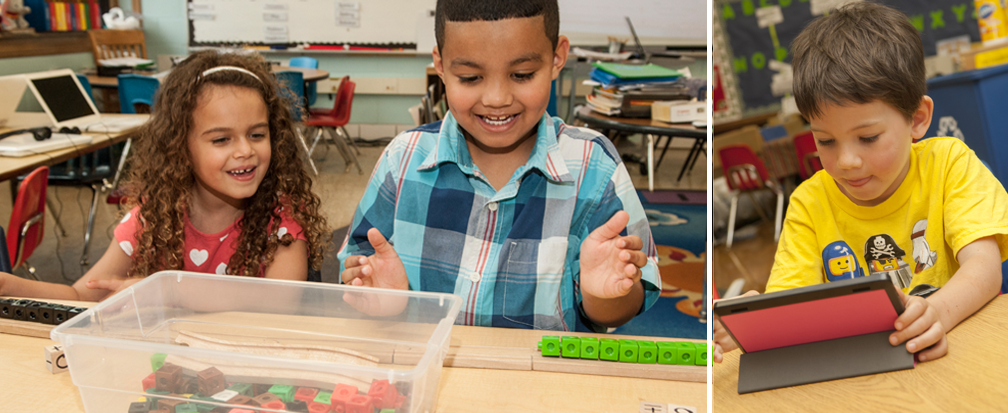Advice From ColleaguesTechnology
Download Technology: Advice from Colleagues
- How can I manage the use of calculators?
- How can I help parents see the benefits of calculator use?
- How can I use the interactive whiteboards (e.g. SMARTboards) with Everyday Mathematics?
How can I manage the use of calculators?
- "I store the calculators on an easily accessible shelf. I hand them out when needed and students then put them back. If they need them at other times they are able to get them. I have them labeled with student numbers so I can tell who still has one out."
- "I have a class set and pass them out when needed. Students can also help themselves to any manipulatives/tools they need as they work."
- "I keep all of mine in a tub and only pass them out if they are needed during a lesson. I prefer this to them keeping them in their desks because then I don't lose any."
- "My students keep their calculators in their tool kits. With my smaller teacher groups of 4 or 5 it is very simple to manage their use."
- "I use an overhead calculator to help my students follow along."
- "Assign students numbers. Each student gets their number calculator. It stays in their math tool kit for the year. Make sure you have the calculators that match the program."
How can I help parents see the benefits of calculator use?
- "Parents need to understand that the main goal of mathematical learning is to be able to apply mathematical concepts to daily living. Most of us do our "figuring" on calculators. If a child is trying to figure out how much carpet is needed in a space, the process of finding square yards is the important concept. The functions of multiplication and division can only help them if they know the formula for finding area, square yards, etc. Calculators help them find the answer to a problem where they must know the process to complete. It is the mind knowing the process that will complete the task, not the calculator."
- "Educate them. Ask them how they do the math in everyday life."
- "Provide problems for parents to explore where they can see that the calculator is not doing the thinking for the student, problems where the calculator functions as the tool it is meant to be."
How can I use interactive whiteboards (e.g., SMARTboards) with Everyday Mathematics?
- "Journal pages, Math Masters, Minute Math, etc. can be done on a (whole) class basis at times. To be able to project this on a SMARTboard and use the journal as a learning tool can be quite beneficial."
- "I use mine all the time—it is a wonderful tool that helps me illustrate what we are learning on any particular day, like Frames-and-Arrows, function machines, number grid work, etc."



